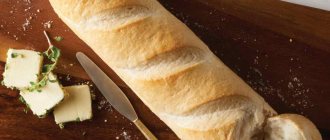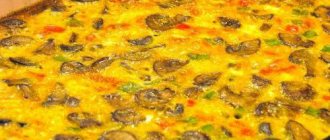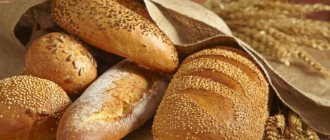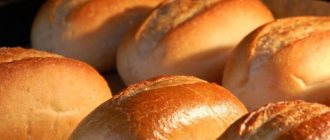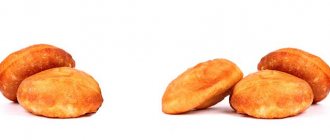Delicious and steaming pizza! Well, isn't it a joy to the stomach after a hard day at work? By purchasing it, you immediately get rid of such worries as wasting time in the kitchen preparing dinner. Moreover, this dish has many different fillings and components. The presence of such additives makes it not only satisfying, but also quite energetically valuable. But the question arises: “How many calories are in pizza?” It can be easily answered if you carefully study the products that it consists of.
Let's start with the test. Flaky and yeasty. The latter consists of components that differ slightly in calorie content, the study of which provides an answer to the question of how many calories are in pizza. This dish is commonly called Italian pizza, and its base is usually made of thin dough. However, some pizzerias also use lush. From this we can conclude that the thickness depends on the dough, and by studying its percentage in the product, you can easily determine how many calories are in a piece of pizza. For example, one hundred grams of puff pastry contains about 454 calories, and yeast dough has about 244 kilocalories. On average, this dish contains quite a lot of fat, protein and carbohydrates. Next, you should find out what products are included in the pizza.
Consider the option of puff pastry, which includes mayonnaise (200 g), ketchup (100 g), (200 g), boiled sausage (150 g), cheese (300 g), four eggs, cabbage (200 g) and onions (70 g). Knowing the calorie content of all components, we can find out how many calories are in pizza, more precisely, in one slice (100 g) - 323 kilocalories.
A product with kefir dough with the addition of champignons, bell peppers and sausages per hundred grams will have 192 kilocalories; meat and greens - 354 kilocalories. If onions and champignons are added - 298 kilocalories. A pizza made from onions and cheese turns out to be quite dietary - 199 kilocalories, and even more so from seafood - 449 kilocalories. With proper calculation and accounting of all components of the product, you will find out how many calories are in pizza.
When buying a frozen product, pay attention to the packaging, which should say “pizza”; the calories are listed just below. Basically, good and high-quality ones contain about 300 kilocalories. It often happens that sometimes a person does not want to wait for a long time, he strives to eat a fast food dish in a street fast food. In this case, you should always pay attention to and the 300 mark is considered the norm.
Eating pizza is a joyful experience for the stomach and that's what its reputation tells us. But when dieting, you need to carefully monitor the amount of product consumed. Thin crust pizza contains fewer calories than puff pastry pizza. Clearly tracking how many calories are in pizza allows you to determine whether you need to increase your energy expenditure if you are on a diet. Knowing the calorie content of this tasty product, you can achieve the optimal result, be sure that your figure is in order, and satisfying the feeling of hunger has not harmed it. Remember, no nutritionist will recommend you to eat pizza frequently, as it is harmful to your health, but once a week in good company you can treat yourself to this yummy food.
Who doesn't love pizza? This tasty and affordable dish has become a favorite among most Russians, and for good reason. Pizza is an ideal snack and a complete lunch that won’t get boring. And the variety of types and components makes this dish even more beloved! Many people are interested in how many calories are in a piece of pizza, is it harmful to your figure and health, and how often can you eat this delicious dish?
Calorie content
It is worth understanding that pizza varies, as does the size of the piece. If you are on a diet, choose pizza with thin yeast-free dough - it will have much fewer calories. An average piece should weigh about 150 grams - you can easily snack on it and not feel hungry. How many calories are in a piece weighing 150 g?:
- A piece of Margarita contains about 450 kcal;.
- Vegetarian (with vegetables and mushrooms) – 400 kcal;.
- Hawaiian has more calories – 500 kcal..
The average calorie content of a piece of pizza is 400 kcal. Of course, if it contains smoked sausage, balyk or ham, then the number of calories will be large. But fish, seafood and boiled chicken are lower in calories, and such pizza will be a completely healthy dietary dish. At least one piece won't hurt your figure!:
Today, inexpensive home delivery in Moscow with free delivery is a popular thing. Why waste time and go to a pizzeria if you can order a delicious lunch right at work, and dinner right at home? It's convenient, fast and profitable. Moreover, you can easily choose your favorite dish on the website. The freshest, healthiest and low-calorie foods will make your meal just perfect!.
Next up is the popular Dodo pizza.
Not every one of us can forever refuse the temptation to eat something forbidden. Yes, perhaps it’s not necessary. Extra restrictions mean extra stress. The main thing is not to overeat. And so that you can correctly calculate the forces, we have prepared this table for you.
Pizza: calorie content per 100 grams and BJU
| Pizza | Kcal, per 100 | Squirrels | Fats | Carbohydrates |
| Super meaty | 279 | 11 | 15 | 24 |
| Pizza 4 cheese | 199 | 8 | 7 | 24 |
| Double pepperoni | 257 | 10 | 12 | 26 |
| Pepperoni | 250 | 10 | 10 | 26 |
| Pizza DODO | 203 | 8 | 8 | 22 |
| Mushrooms and ham | 189 | 9 | 6 | 23 |
| Don Bacon | 277 | 9 | 15 | 24 |
| Ranch pizza | 214 | 9 | 8 | 24 |
| Four seasons | 189 | 5 | 8 | 25 |
| Hawaiian | 216 | 12 | 7 | 25 |
| Meat | 237 | 11 | 9 | 26 |
| Pizza Margherita | 182 | 7 | 5 | 25 |
| Cheese | 223 | 9 | 8 | 27 |
| Pizza pie (sweet) | 144 | 2 | 2 | 29 |
| BBQ chicken | 251 | 9 | 12 | 24 |
| Marine | 176 | 8 | 5 | 25 |
| Italian | 220 | 8 | 8 | 27 |
| Mexican | 164 | 7 | 4 | 23 |
| Cheese chicken | 196 | 9 | 6 | 23 |
| Cheeseburger pizza | 208 | 7 | 9 | 22 |
| Vegetables and mushrooms | 173 | 6 | 5 | 23 |
Using this table, you will find out not only the calorie content of DODO pizza, but also other pizzas, including homemade ones. The exact data, of course, differs, but you can use it as a guide.
The calorie content of pizza with sausage, hunting sausages, and bacon is higher than the calorie content of Margherita pizza or pizza with vegetables, mushrooms, and seafood (the latter also have the least fat). It also depends on the sauce the cook used.
Piece of pizza: calorie content and weight
Knowing the nutritional value of 100 grams of pizza, it is easy to calculate the calorie content of 1 piece.
Take the total weight (check with the operator when ordering or on the website) and divide by the number of pieces. A large pizza (35 cm) is usually cut into 10 pieces, a medium one into 8 pieces, and a small one into 6 pieces.
- Example: a small 4 cheese pizza weighs 450 grams and is cut into 6 pieces. This means that the weight of one piece is 75 grams, the calorie content of pizza with cheese is 199 kcal per 100 grams. Therefore, the calorie content of 1 piece of “4 cheese” pizza is 150 kcal.
How not to overeat?
- Stop eating when you feel slightly hungry, and don’t overeat.
- Try to order just enough to eat right away. Remember how much pizza you need for two, four or a large group.
- Give preference to pizza with cheese and tomatoes - its calorie content is lower. This also includes: mushrooms, lean ham, salmon, squid, shrimp. But it is better to eat dishes with mayonnaise, bacon, and sausage as rarely as possible. Thin pizza is also usually lower in calories.
- Best option: with tea or coffee. If you drink alcohol while eating pizza, be prepared to eat more. Sweet soda is also in the trash!
Eat for pleasure and do not harm your health!
Subscribe to our channel in Yandex Zen:
Pizza is an extremely popular dish of Italian cuisine, along with pasta, which is a round flatbread covered with filling, sprinkled with cheese and baked. It appeared in the 16th century, when tomatoes were imported into the country. This simple and tasty dish was loved by both peasants and kings. Such qualities led to its spread throughout the world and the emergence of an unimaginable variety of completely different recipes. Unfortunately, the calorie content of pizza, like many other delicious dishes, is quite high. If you are in the process of losing weight, it is better to give up your favorite treat. If there are no problems with your figure, eat to your health, the main thing is to follow certain rules.
Pizza dough
There are quite a few types of dough suitable for this dish, and some have several preparation options, and their composition may also differ markedly. Most of them contain a lot of carbohydrates and sometimes fat, like any flour product, which will negatively affect weight. But since the dough is the base of the pizza, there's no escape. You will have to either deny yourself the pleasure of tasting the dish, or choose the one that least spoils your figure.
Energy value of pizza dough
After studying the calorie content of popular dough recipes, you can choose the most suitable one for preparing the dish at home.
Calorie content of fillings
There are many filling options. It all depends on which recipe is chosen. There may be nothing but tomato sauce and cheese, or there may be a mixture of a wide variety of products on the tortilla. It can be both sweet and spicy. Some filling options will please your stomach and will not spoil your figure.
Energy value of ingredients in kilocalories per 100 grams
| Product | Variety | Kcal |
| Meat | Turkey | 195 |
| Turkey ham | 84-120 | |
| Pork | 275-285 | |
| Prosciutto | 279 | |
| Beef | 158 | |
| Chicken | 150 | |
| Sausage | Salami | 568 |
| Pepperoni | 601 | |
| Milk sausages | 261 | |
| Vegetables | Tomatoes | 19 |
| bell pepper | 25,3 | |
| Olives | 115 | |
| Eggplant | 24 | |
| Zucchini | 16 | |
| Red onion | 41,7 | |
| Yellow onion | 38 | |
| Seafood | Shrimps | 91,3 |
| Squid | 101,4 | |
| Anchovies | 182,6 | |
| Fruits | Pineapples | 48 |
| Pears | 42 | |
| Bananas | 91 | |
| Kiwi | 49 | |
| Lemons | 31 | |
| Mushrooms | Champignon | 41 |
| Oyster mushrooms | 38 | |
| White | 34 | |
| Sauces | Ketchup | 60 |
| Mayonnaise | from 350 to 650 | |
| Spices | Oregano | 306 |
| Basil | 27 | |
| Blend "Provencal herbs" | 204 |
Salt has zero calorie content, but the energy value of ground pepper or peppercorns is about 250 kcal per 100 grams.
Pizza Margherita and Pepperoni
One of the most dietary pizza options possible is Margherita. The filling for it consists of tomatoes, mozzarella and Parmesan cheese and basil.
Calorie content of 100 grams of Margherita pizza is 208 kcal.
The word "pepperoni" means "spicy sausage." The Italians call a dish with this ingredient “Devil's Pizza.” The classic version of Pepperoni pizza has an islandy, spicy taste.
The filling includes, in addition to pepperoni sausage, tomato sauce and mozzarella cheese.
The energy value of Pepperoni pizza is 254 kcal per 100 grams of product.
Calorie content of cheeses
It is difficult to imagine pizza without cheese, which has become a traditional part of almost all recipes for the Italian dish, its unique calling card. Usually the types that are used are those that do not have their own strong taste, but the topping of the Four Cheese Pizza is an exception. It consists of mozzarella, brie, emmental and parmesan. However, they can be replaced with others - the main thing is that there are hard, soft, aromatic and blue varieties.
Many types of cheese may well lead to the accumulation of extra pounds, since they contain a huge amount of fat. Below are the most common ones that are commonly used on pizza:
- Mozzarella - 240 kcal per 100 grams of product;
- Brie - 291;
- Emmental - 380;
- Parmesan - 392;
- Camembert - 291;
- Mascarpone - 412;
- Feta - 290;
- Cheddar - 392;
- Ricotta - 174;
- Dor blue - 354 (dor blue a la crème - 265);
- Gouda - 356;
- Russian - 363;
- Cheese cheese - 260.
Mozzarella is not without reason one of the most popular types of cheese for pizza. Its calorie content is quite low, and its taste is in no way inferior to many other varieties.
Energy value of 1 slice of pizza
Restaurants offer many different dish options, but the menu does not always indicate their full composition, much less their calorie content. The information below will help you find out how many calories are in one slice of pizza you ordered. Values are given in kcal per 100 g.
- "Margarita" - 208;
- "Pepperoni" - 254;
- “Four cheeses” - about 290;
- "Hawaiian" - 216;
- with ham and mushrooms - 244;
- with chicken breast, giblets and vegetables - 160;
- with sausage - about 250;
- vegetarian vegetable - 179;
- with three types of smoked meats - about 300;
- with mushrooms, vegetables and onions - up to 218;
- with salmon - more than 400.
Although the dish may not be very high in calories, you should not eat a lot of pizza - it will be harmful to your health. For diseases of the gastrointestinal tract, yeast dough is not recommended. Tomato paste, which is often used to prepare this dish, contains preservatives. The dish is also rich in fat, and the dough itself may contain sugar, which contains many, many carbohydrates.
Calorie content of dough for the base
Different types of dough are used for different types of dishes. In addition, the base can be thick or thin. This affects how many grams of dough will be in one piece.
A richer dough containing a large amount of fat and sugar has a higher calorie content. The table shows average values for different types of dough used to prepare the dish.
Calorie content and nutritional value of different types of dough per 100 g
| Type of test | Proteins, g | Fats, g | Carbohydrates, g | Calorie content, kcal |
| Yeast | 6,5 | 5,3 | 49,0 | 270,0 |
| Yeast fresh | 7,5 | 2,0 | 42,0 | 216,0 |
| Yeast industrial production (pizza base) | 8,7 | 6,8 | 55,8 | 320,0 |
| Yeast puff | 7,7 | 20,9 | 41,0 | 383,0 |
| On kefir | 8,0 | 1,1 | 42,1 | 210, 0 |
| Fresh | 8,7 | 2,6 | 41,2 | 223,0 |
| Unleavened puff pastry | 5,5 | 21,9 | 39,5 | 377,0 |
| Curd | 10,2 | 18,9 | 26,1 | 315,0 |
| Thin dough | 6,6 | 3,3 | 36,7 | 203,0 |
The number of calories is reduced due to the absence of oil, sugar, yeast, the use of wholemeal flour, and the preparation of pizza on a thin basis instead of a thick one. Low-calorie dough - unleavened, as well as unleavened with kefir. Yeast puff pastry has the highest calorie content.
To prepare dietary pizza, instead of wheat flour, you can use rye or oatmeal, ground buckwheat, or oatmeal. It is better to bake in an oven, frying pan, or microwave without oil. This significantly reduces the number of calories contained in the finished product.
How to eat without gaining weight
Restaurant pizzas are prepared according to precise recipes, most of them contain a lot of fats and carbohydrates, which is bad for a slim figure. You will have to carefully select the desired option from the menu. For example, restaurant vegetarian or Hawaiian pizzas are quite suitable for those who want to eat deliciously and not gain weight.
Another obvious way is to cook it yourself, because then you will know exactly what is included and how many calories are in the pizza created for you. You may not even go beyond your diet. An oven is suitable for cooking. Standard yeast dough can be replaced with kefir dough, and the filling is easy to choose, tasty and low-fat. For example, turkey or chicken ham is rich in protein, but contains very little fat and carbohydrates, which means it is low in calories. Of all the sauces for greasing dough, the best choice is homemade.
Pizza is prepared by baking, so it is not as unhealthy as fried pizza. Cheese contains calcium, which is good for bones, and tomatoes, which are an essential component of almost any pizza, help prevent cardiovascular diseases and cancer. The wheat used to make the dough contains beneficial antioxidants.
Initially, the traditional Italian dish was prepared according to a classic recipe, and the list of ingredients was quite simple: crust, tomato paste, tomatoes and cheese. Americans began to add sausage and ham to the filling, where this dish, along with fast food, quickly gained enormous popularity and began to be considered a “heavy”, high-calorie product. In fact, if you choose ingredients wisely, the calorie content of pizza will not be so high, although it is still difficult to call it a dietary product.
How to eat pizza without gaining weight
The following recommendations when choosing and preparing pizza will help protect your figure:
- Thin base instead of thick.
- Low-calorie pizza (vegetarian, with mushrooms or seafood).
- Cooking pizza at home, since the composition and quantity of ingredients can be selected independently.
- A large number of vegetables in the filling.
- Lack of baking and yeast in the base.
- Replacing mayonnaise with tomato sauce, sausages with white poultry meat.
- Consume the dish in the first half of the day and no more than once a week.
The materials posted on this page are informational in nature and intended for educational purposes. Site visitors should not use them as medical advice. Determining the diagnosis and choosing a treatment method remains the exclusive prerogative of your attending physician.
How many calories does classic and “American” pizza hide?
Despite the abundance of various sauces and cheeses, traditional Italian cuisine is quite low in calories. It contains a lot of vegetables, fruits, herbs and a minimum of meat products. A thin yeast dough is used to make the crust, and most of the dish has a delicious vegetable filling. To determine how many calories are in pizza and how the cooking process affects this, you need to consider all the components separately.
- Dough. You may notice that in elite cafes and restaurants where Italian dishes are on the menu, the pizza crust does not exceed a thickness of 0.4–0.5 mm. The baking technology is close to traditional and takes place in a special oven. To prepare the dough, use flour, water and oil. In budget fast food establishments, rich yeast dough, incredibly fluffy, is often the main component of pizza. The calorie content of such a flatbread is quite high - about 250 kcal per 100 g weight, while unleavened dough is slightly lower - about 210 kcal.
- Tomato sauce. The classic dish is prepared using tomato paste, while “American” pizzas contain a huge amount of mayonnaise and ketchup, which dramatically increases their calorie content. Thus, the difference between ketchup and tomato paste is 56 kcal per 100 g weight, which is a very significant figure.
- The filling is the most important and delicious component. The calorie content of pizza with vegetarian filling is certainly lower. Its composition includes: tomatoes or cherry tomatoes, artichokes, bell peppers, onions, black olives and many other vegetables. The most famous low-calorie pizza is the classic Margherita. Mushrooms are quite “safe” for the figure, so the champignon filling is of medium calorie content. If you want meat, it is better to give preference to ingredients such as chicken, turkey, lean beef or seafood. Salts, ham and various types of sausages should be avoided; they are already quite high in calories, and after heat treatment this figure will increase even more.
- Cheese. To prepare the dish, various types of cheese are used, and depending on the % fat content, its energy value per 100 g weight varies from 250 to 360 kcal. It is important to know, just like sausages, the calorie content of cheese after heat treatment increases noticeably. Some recipes do not include the classic web of grated cheese. Sometimes it is replaced with pieces of feta cheese or mozzarella, the calorie content of which is 220–260 kcal.
High calorie pizza toppings
To ensure that the cheese melts well, fatty varieties with a high calorie content are used. In restaurants, vegetables for filling can be pre-fried in batter. Fatty meats and fish also increase calorie content.
High-calorie foods used for cooking:
- high fat cheese;
- sausages;
- fatty fish;
- fatty meats;
- vegetables in batter;
- mayonnaise;
- mustard;
- ketchup.
The most popular types of pizza and their energy value per 100 g weight.
| Name or ingredients of pizza | Number of kcal* |
| “Margarita” (tomato paste, tomatoes, cheese) | |
| Vegetarian (tomatoes, olives, sweet peppers, herbs) | |
| With mushrooms and onions | |
| With mushrooms and semi-smoked sausage | |
| With mushrooms and pickled gherkins | |
| With shrimp and cheese | |
| With salmon and cheese | |
| “Hawaiian” (with chicken and pineapple) | |
| With chicken, basil and mozzarella | |
| With salts, ham or sausage | from 250 to 300 |
*data are averaged, and the indicator largely depends on the composition of the dough, the amount of oil and the calorie content of the ingredients themselves
How to include pizza in your diet without harming your figure?
Considering how many calories there are in pizza, even vegetarian, you need to take its share in your diet seriously. If you can’t completely give up a piece of this aromatic dish, you should at least adhere to a few rules.
It is better to prepare the pizza yourself, this way you can control the energy value of the products and try to reduce the calorie content of both the flatbread and the filling. It is better to knead the dough using kefir, using wholemeal flour and olive oil.
You should choose a pizza that contains a large amount of vegetables and herbs (fresh lettuce, arugula), they will reduce the burden on digestion. The meat in the composition must be boiled; sausage and ham are absolutely not suitable, as well as the presence of mayonnaise.
For those who do not want to gain weight, nutritionists recommend eating no more than 2 pieces at a time and only in the first half of the day. On average, a standard slice of pizza weighs about 100g.
Adhering to these rules, it is not forbidden to treat yourself to delicious food 2-3 times a month and at the same time maintain a slim figure. And so that your conscience does not torment you for eating a couple of pieces, you can spend the acquired calories in the gym or on a 30-minute jog in the park.
The benefits and harms of pizza
The beneficial and harmful properties of pizza depend entirely on its composition. At the same time, you can increase the positive qualities and reduce the negative ones by replacing some products in the recipe with others.
Benefits of pizza:
- Hard cheese contains a large amount of calcium, which is necessary for bones, teeth, nails, and hair.
- The use of wholemeal flour in the dough enriches the dish with antioxidants from the endosperm. It also helps the body cleanse the gastrointestinal tract of toxins and harmful substances.
- Fresh tomatoes contain lipoline, which is used as a prophylactic against diseases of the cardiovascular system and oncology.
- Seafood, meat and fish products enrich the dish with protein and nutrients.
- Vegetables contain fiber, which has a beneficial effect on intestinal function.
Pizza harm:
- Yeast pizza dough causes flatulence and bloating.
- High-calorie filling increases the energy value of the dish.
- Excessive consumption of this dish leads to weight gain and deterioration of the gastrointestinal tract.
